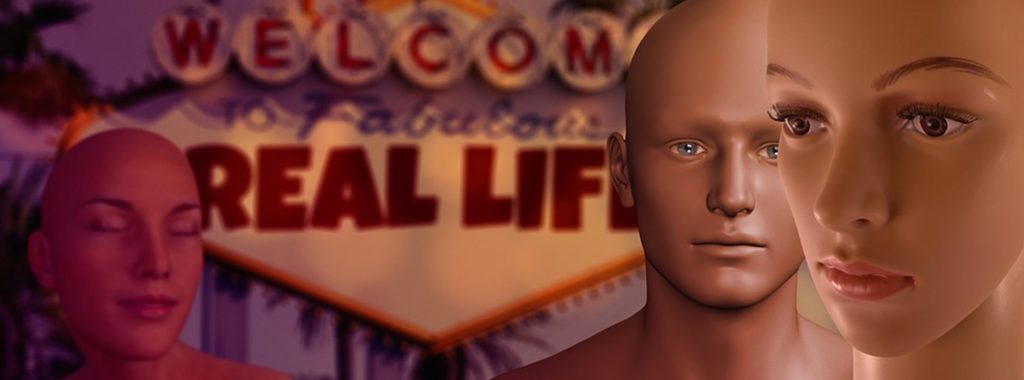This post is also available in Dutch.
The dawn of the digital face
Photoshop, launched in 1990, and similar photo editing tools were the first to allow users to create graphics and enhance photos. By the time Photoshop became a staple tool in marketing, media, and fashion, the field of computer graphics was advancing in the creation of realistic 3D objects. In the last decade or so, the field’s goal to create objects and people indistinguishable from real ones has started to come to fruition. It is now possible to create 3D faces that are photorealistic using 3D scanning. This is typically done by taking lots of images of a real person from different angles and with different facial expressions and building a computer model of the face. It is quite remarkable that such faces appear realistic because the face is not an easy nut to crack. The face is a multidimensional object, which means that precision is needed when creating its shape, surface texture (wrinkles, furrows, ridges, bumps) as well as the interaction between the surface texture and lighting.

Source: Soul Machines
Virtual faces in psychology and neuroscience research
For now, photorealistic 3D faces are rarely used in research. It is more common, in cognitive psychology and neuroscience, to use faces that are virtual but clearly distinguishable from a real person. Such virtual faces can be created using software like FaceGen, which allows importing a frontal and two lateral images of a face. While many different virtual faces can be created, the surface texture details are difficult to reproduce with this method, causing the face’s surface to appear overly homogenous, almost plastic. Nevertheless, many studies interested in the perception of traits from the face (dominance, trustworthiness) and facial expressions have relied on virtual faces. The rationale for this is that virtual faces have high experimental control; for example, it is easy to systematically manipulate shape and other facial features by changing a set of model parameters.


Source: Verberne et al. (2014)
Virtual faces are processed differently from real faces
Virtual human faces might not be reliable for understanding the processes of social perception or, at least, one should be cautious in assuming that such faces engage the exact processes for looking at a natural face. Several studies (this, this, and this) that investigated memory for faces showed that virtual faces are remembered less than real faces. Moreover, social evaluations of real and virtual faces were found to differ even when these faces were matched on identity (the same face shown as a photographic image and as a virtual face). Neural studies, too, found differences: the brain area that is tuned to faces, the fusiform face area, was less active when processing virtual compared to real faces. The reason for this could be a lack of surface texture details which are crucial for face perception and recognition. Until high-end 3D faces become common tools, researchers should consider whether and how using virtual faces might impact the results and what is being studied. If a lack of detailed appearance may not be an issue for the question at hand, then virtual faces may be a good option, otherwise, alternatives should be sought.
Credits
Author: Julija Vaitonyte
Buddy: Christina Isakoglou
Editor: Christienne Gonzales Damatac
Translator: Felix Klaassen
Editor translation: Wessel Hieselaar
Image by Gerd Altmann via Pixabay
